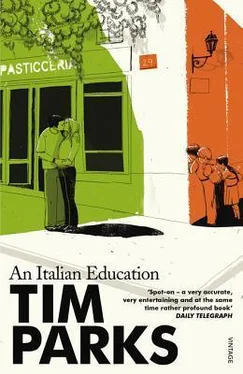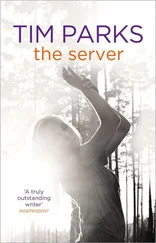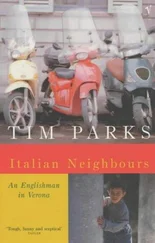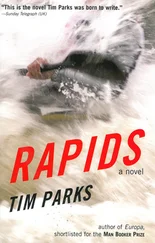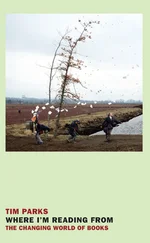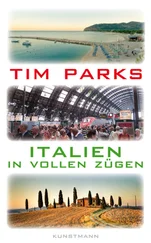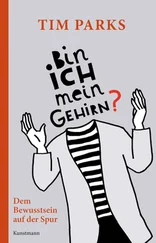Then back to the Baldassarre property, where one has to shrug off the assaults of an army of people ready to eat the children before they can eat their lunch.
How can I explain this?
The Baldassarre property covers a couple of acres of flat sandy terrain off Via Luigi Cadorna. Around the space are three buildings. One is a fairly noble though dilapidated old house overlooking Via Cadorna itself. The upstairs tenant is a mad lady. Indeed, as we approach, here comes the first thing to avoid. Having parked her ancient Seicento under the balcony, she will come out every half an hour or so and pour buckets of water over it from three metres above to keep it cool in the summer sun. The splashes reach almost across the street. They splatter the windows of the downstairs tenants, a young Persian architect and his Turkish wife, who run a late-night bar in town and hence are just getting up as we return. It’s funny how the children don’t find it funny, or sad, this business of the scrawny old woman with her plastic washing-up bowl taking aim from above. They merely repeat the indignance they’ve heard from other sources. They can’t grasp the mad poignancy of it.
You enter the property fifty yards of flaking green railings further on. All the way along Via Cadorna little stones set in the flags along the street announce that the pavement is Proprietà privata . Householders own the land beyond their fences and paid for the pavement to be laid. Notably, there is no pavement outside Nonno’s property, only coarse grass sprouting from long-broken tarmac. He didn’t pay. He wasn’t around when this group effort was made. On the green railing a big black arrow with yellow lettering announces ‘ARIANNA INFORMATICA — 100 mt.’ One day, stepping round the fast-evaporating puddles by the Seicento, Michele asks me what it means, Arianna informatica. It must be some kind of computer company, I tell him. And I suggest that since Arianna (Ariadne) helped Theseus find his way through the labyrinth to kill the minotaur, perhaps the company is proposing to offer a similar kind of assistance. Ironically, we have never been able to locate Arianna informatica. We only know that it lies or lay a hundred metres away in that direction. There doesn’t even appear to be any labyrinth it could be lost in. The sign is very old.
Likewise very old is the second house that confronts you at the bottom of the path when you get in the gate. This everybody refers to as lo chalet svizzero — the Swiss chalet — a one-storey building whose mud and stone walls were planted directly on the sandy soil with only the shallowest foundations. Perhaps two hundred years ago. Its stucco is the colour of milk spilt on a dusty floor. The shutters are bottle green.
Here Antonietta lurks. Either she sits on her chair by the door, scrawny cat in the shade beneath her seat, or she is working at her sink, a huge stone thing of the variety one generally associates with those films of the thirties and forties that sought to evoke a fast-disappearing peasant reality. For the story about the Baldassarre property is that having inherited the place shortly after the war, Nonno and Nonna then lived most of their lives abroad, directing building sites around the world, with the result that, apart from the Persian and the Turk, the tenants are still those installed forty years ago, paying rents that have barely altered since.
Antonietta has turned eighty. She used to babysit Rita and her brothers. She is squat, buxom, frail to the point of tottering on her shabby slippers with black stockings rolled down on unsightly varicosity. Her skirt is black and her shawls are black. It’s an old toothless Italy. But she’s so eager to be with the new, to have the children, to talk to them, to hear their talk, to caress them, to give them sweets. She is always waiting for us.
Today she is at her sink, powerless wrists rubbing some fabric against the rough stone, for these sinks have a sort of scouring surface built in. Immediately, she smiles, waves, hobbles round to greet us. She has a present for me and for the children. From her windowsill she takes a saucepan covered with a cloth, beneath which slops a minestrone with pasta and beans. For the children there are packets of ciunga , a bizarre phonetic derivation of those noble words, chewing gum.
Michele and Stefi aren’t sure whether they like Antonietta or not. They are frightened by the flaking skin on her face, the mottled hands. With me, despite all I tell them about respect for our elders, concern for those who are infirm, they refer to her as la strega , the witch. Her voice does have that wheedling seduction one associates with being lured into traps. The kids grab their gum and run. I stay to thank the old lady, wondering if I’ll be able to persuade them to eat the minestrone, since I know from past experience that Antonietta has a habit of cooking everything to a mush, perhaps forgetting what life was like with solid teeth.
We now cross what Rita calls the savannah to the property’s third and last building. Hidden from the street behind the front house. This is a low, two-storey block with a flat roof. Nonno built it himself in the fifties but ran out of enthusiasm, or money, or both, and never put the planned third storey and the slanting roof on. Now, with its cement grey walls and a sort of gloomy utilitarian recalcitrance, it has the air of a bunker built for some forgotten conflict, or for an overspill of unwanted refugees. We call it il carcere , the prison house. When a piece of what you thought was dirt darts across the cracks in the wall, that was a lizard…
The savannah, on the other hand, is the area of entirely untended grass between the three houses. Fig and plum trees rise above the tall weeds, and the space is split in two by an inexplicable fence whose top wire everybody uses for their washing. All the underwear and hosiery hanging there is immediately recognisable as belonging to old people. For the two top apartments of the prison house are also let out to tenants who have known no other home these forty years and more. To the left are two aging spinster sisters, Clara and Iolanda, who like Antonietta would love to gobble up the children with their eyes and ears, if only the cruel little things would stay still for a moment. When these two old ladies walk along the path through the savannah, it’s as if they were leaning on each other. Neither one could make it on her own, you fear, so that if one or the other were to go down, perhaps through a collision with my rumbustious son, racing by on his bicycle, then the other would surely fall, too. But Clara and Iolanda are more educated than Antonietta. They wear more modern clothes: loose trousers and coloured blouses. At some point in the holiday we will have to sit in their suffocating living room and drink sweet coffee amongst doilies and framed photos of the dead and a scatter of religious publications of the kind that show young saints in heaven-lit ecstasy. Iolanda, the older, tells me she hasn’t been down to the beach these twenty years and more.
The other top flat, approached by an outside staircase, belongs to a cripple and his wife, but they are rarely seen and far too halfhearted in their attempts to attract the children’s attention. The only occasional indication we get of their presence is when the husband decides to use his crutches rather than his wheelchair to move from TV to kitchen. For we are in the flat below his, the other ground-floor flat being where Nonna and Nonno live.
Makeshift wires cross the savannah on makeshift poles. They sag from the house on the street to the prison house, from the prison house to the Swiss chalet. For Nonno has never seen why he should pay the electricity company three separate base rates for three separate buildings.
Читать дальше
